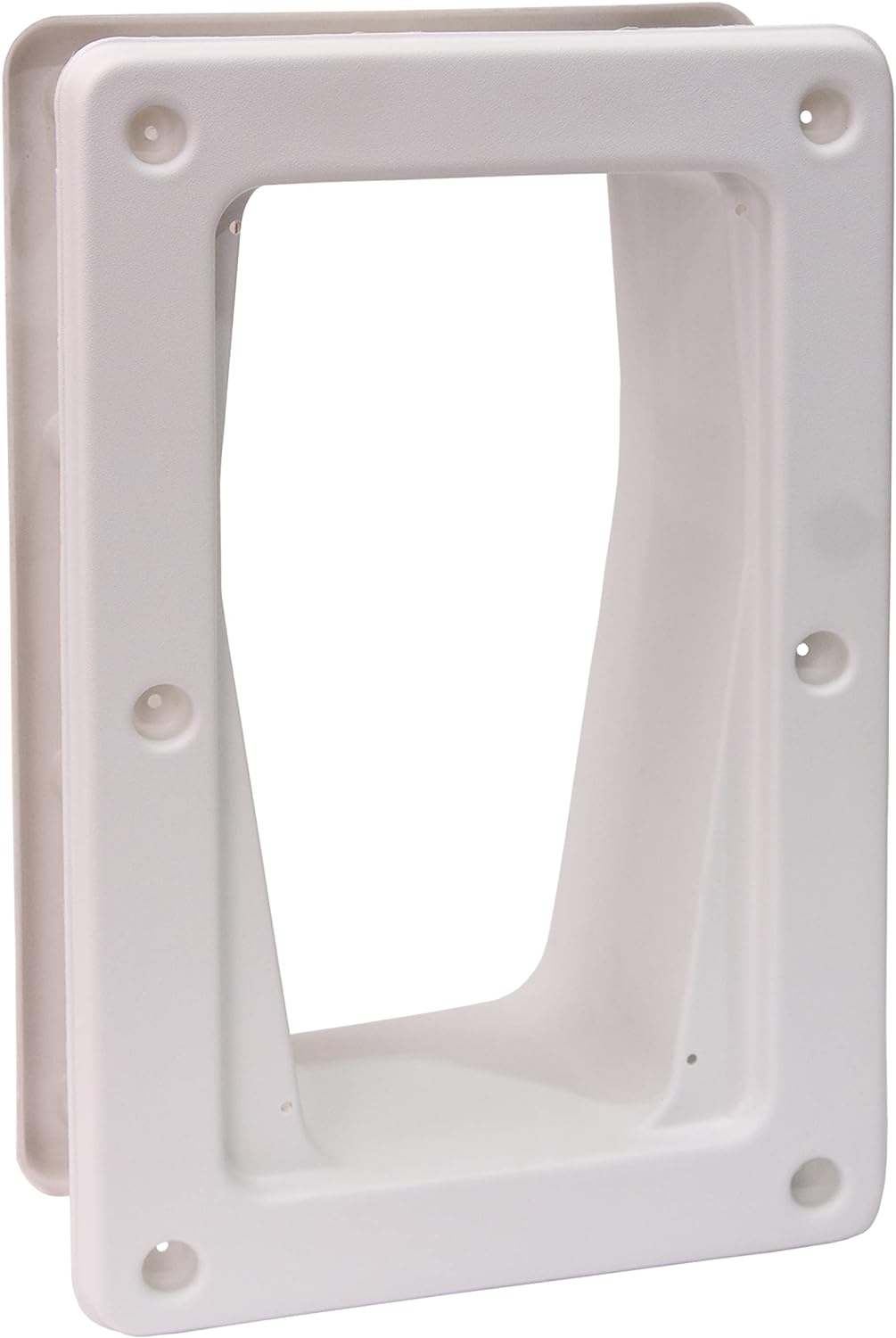- EASY INSTALLATION
- TELESCOPING DESIGN
- PetSafe Electronic SmartDoor
- Large
- White
Introduction
Cats have a unique way of communicating with their owners, and one of the most common behaviors is flopping. When a cat flops down in front of you, it might seem like a playful or random action, but there are actually many reasons behind this behavior. Often, this cat rolling signals that your feline friend feels safe and secure in their environment. This behavior is typically a display of trust and comfort, showing that your cat is happy with its surroundings. Cats have a unique way of expressing these emotions through body language, and flopping is a strong indicator that they are content.
There are many reasons why your cat may engage in flopping and rolling. Sometimes, it simply means that your cat is ready to play or seeks attention. Other times, it indicates a deeper bond between the cat and its owner, especially if the cat flops down and starts rolling on its back, showing its vulnerable belly. Understanding this behavior can help cat owners build stronger connections with their feline companions, enhancing the bond they share.
Key Takeaways
- Cats often flop over as a sign of trust and comfort, showing that they feel safe and secure in their environment.
- Exposing their belly is a vulnerable position for cats, indicating deep trust towards their owner when they perform this action.
- Cats may flop as a way to seek comfort, often finding a cozy spot or seeking attention from their human companions.
- Flopping is a way for cats to signal their desire for attention, especially when they want interaction or affection from their owner.
- This behavior strengthens the emotional bond between cats and their owners, providing opportunities for deeper connection through play or affection.
- Spaying or neutering can prevent unwanted mating behaviors, including heat-induced flopping, contributing to a calmer and healthier home environment.
Cat Flop For Trust and Comfort
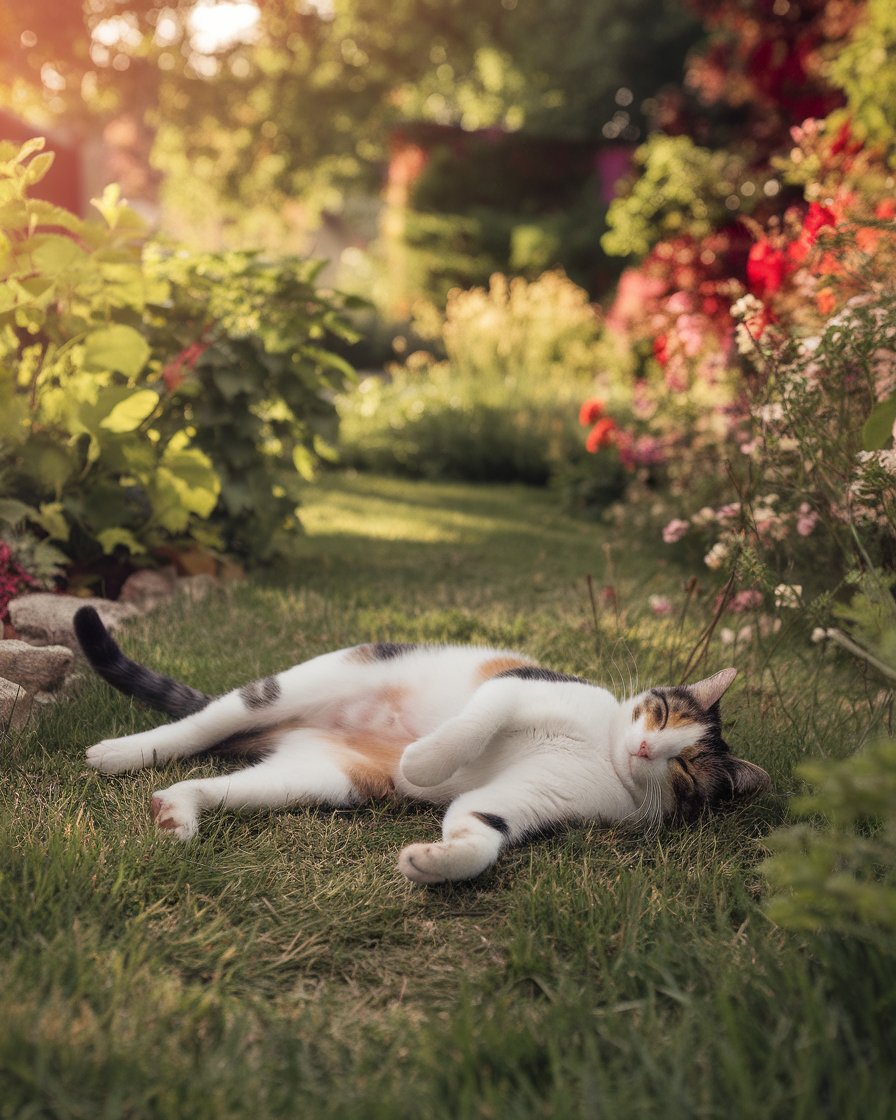
Cats are known for their independent nature, but when they choose to show trust, it’s a significant moment in the bond between a cat and its owner. Trust is often displayed in small gestures, such as when a friend decides to flop and exposes its belly. This behavior signals that the cat is flopping because it feels safe and secure, knowing it is in a space of comfort. Many cat owners may overlook these subtle signs, but recognizing them is important in strengthening the relationship with their feline friends. Reasons why your cat flops can include feeling content or wanting to communicate trust, often seen when they feel their environment is nurturing.
Why Does My Cat Flop Over When Near Me?
1. Displaying Trust
When a cat flops and exposes its belly, it’s a clear sign of trust. Cats are naturally cautious creatures, and their belly is one of the most vulnerable parts of their body. By showing you their belly, they are demonstrating that they trust you not to harm them. This flopping behavior is particularly common when cats feel safe in their environment, and it strengthens the bond between the cat and its owner.
2. Seeking Comfort
Cats may flop over when they are seeking comfort or relaxation. They often choose spots that are cozy or familiar and flop down to stretch or rest. This behavior can also be an invitation for some gentle petting or belly rubs. When your cat flops over during a quiet moment, it’s often because they feel content and comfortable in your presence, creating a serene atmosphere.
3. Encouraging Interaction
Sometimes, a cat flops near you as a way to initiate interaction. Cats, though independent, still seek attention and engagement from their owners. Flopping over and rolling around is a playful gesture that encourages pet owners to engage in affectionate behavior, such as petting or even playtime. This action serves as an invitation for interaction, signaling their need for your attention.
4. Showing Contentment
Flopping behavior in cats can also be a sign of pure contentment. When a cat is well-fed, relaxed, and comfortable, they may flop over and stretch out to display their happiness. Cats are known to exhibit this behavior after play sessions or meals when they are fully satisfied. It’s a way for them to demonstrate their satisfaction and enjoyment of the moment.
5. Inviting Playtime
In many cases, cats use flopping as a playful invitation. While it may look like they are relaxed, they are often preparing to play. Rolling around on the ground, flopping their bodies from side to side, can be a signal that they want to engage in play. If you notice your cat flopping near toys or while in a playful mood, take it as an invitation to engage with them.
Pet Cat May Flop When it Feel Safe as Sign of Trust
When a cat flops over, it’s typically a strong indication of trust. Showing the belly is one of the most vulnerable positions for a cat to be in, and it shows they feel safe around you. This gesture, often observed in front of their owners, signals that they trust you not to harm them when they are at their most defenseless. Feline friends who perform this flopping behavior are telling their humans that they feel secure in their presence. It’s important for cat owners to cherish these moments, as they indicate a solid bond has been formed behind this adorable behavior.
Comfort Seeking Behavior
Cats also flop over when they are seeking comfort. This action might be as simple as finding a cozy spot or trying to get some attention from their owner. Cats enjoy being in spaces where they feel relaxed, and this behavior is often their way of showing contentment. Whether it’s during a play session or after, many cats will flop over and expose their vulnerable belly to communicate their comfort. For pet owners, this is an opportunity to engage in interactive play or simply show their feline companion some affection. A flopping cat is a happy cat.
Many Cat May Flop Over as Attention Seeking
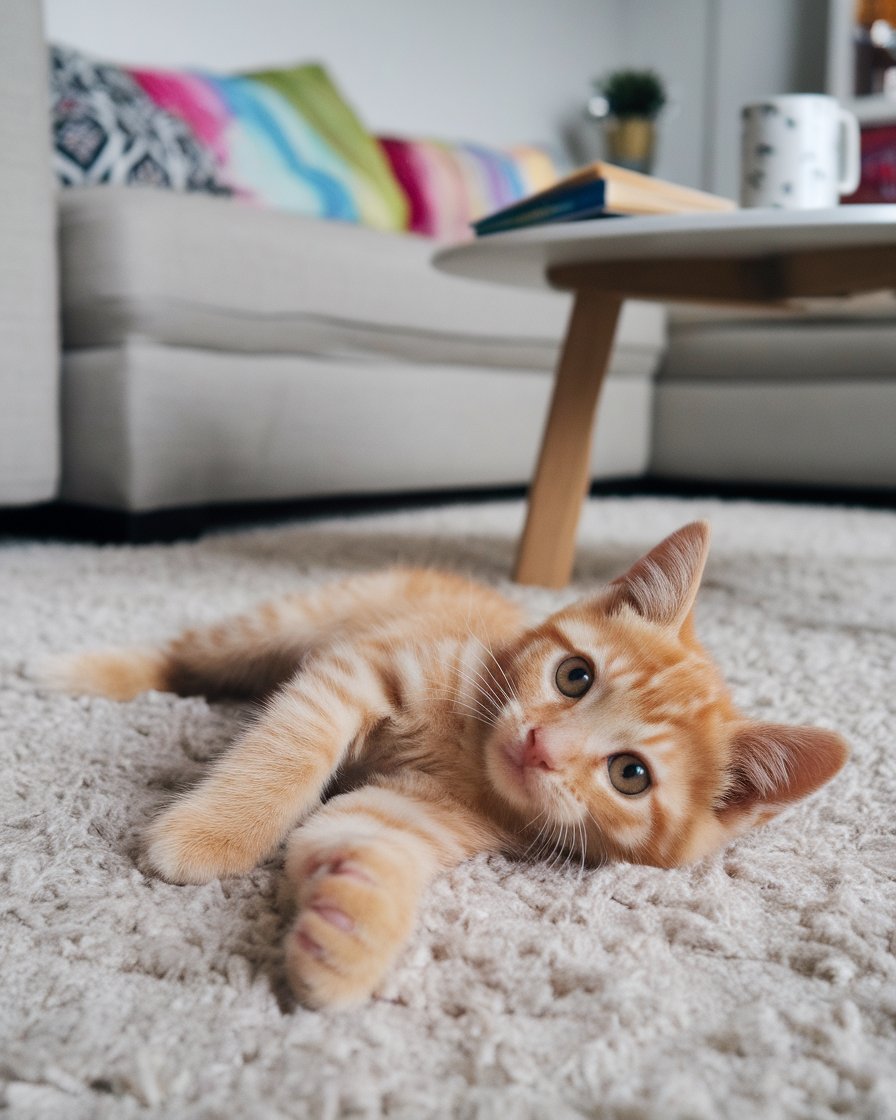
Cats, though independent, have unique ways of seeking attention from their humans. One of the most noticeable and endearing behaviors is when a cat flops over in front of you. This sudden, seemingly random action is often a clear signal that your cat wants attention. Unlike dogs, who may bark or jump, cats express their need for interaction more subtly. Their feline flop is a playful gesture that indicates they are comfortable around you and are inviting you to engage. This simple act highlights their desire for social bonding and affection, and it’s just one of the many reasons why cats flop.
Case Study: Cat Flopping as Attention-Seeking Behavior
In 2017, a study published by the Journal of Feline Behavior observed the attention-seeking behaviors of domestic cats in various households. Researchers followed 50 cat-owner pairs to document different ways cats communicated with their humans. One of the most common behaviors observed was the “feline flop,” where cats would suddenly flop down, exposing their bellies. This behavior was identified as a non-verbal cue for attention-seeking.
In particular, one participant’s cat named Luna displayed this behavior repeatedly in front of her owner when she wanted to play or cuddle. Unlike more vocal pets, Luna used flopping as a way to signal comfort and desire for interaction. The study concluded that many cats may flop over in front of their owners as a playful and affectionate way to seek engagement, confirming that the behavior often strengthens the emotional bond between cats and their humans.
Desire for Attention
When a cat flops in front of their owners, it’s their way of saying, “Hey, notice me!” This adorable action is often performed when your cat wants attention or is seeking interaction. Cats, being naturally independent, don’t always demand attention like dogs. However, this flopping gesture is their way of catching your eye without being too pushy. Many cat owners recognize this behavior as a sign of trust and connection, especially when the cat feels secure enough to be showing the belly. When you see your cat perform this action, it’s an invitation to engage in play or affection, highlighting the bond you share.
Seeking Interaction with Owner
Cats may flop over as a way to strengthen the bond they share with their humans. Flopping is not just about play; it’s also a way for your cat to connect emotionally with you. When a cat suddenly flops down and starts to roll back and forth, it’s often a sign that your cat wants your attention, whether for a belly rub or simple acknowledgment. This behavior reflects the strong relationship that cats form with their owners. It’s an opportunity to build on that connection by responding with affection or play, deepening the bond you share with your feline companion.
Expression of Happiness That The Cat Wants
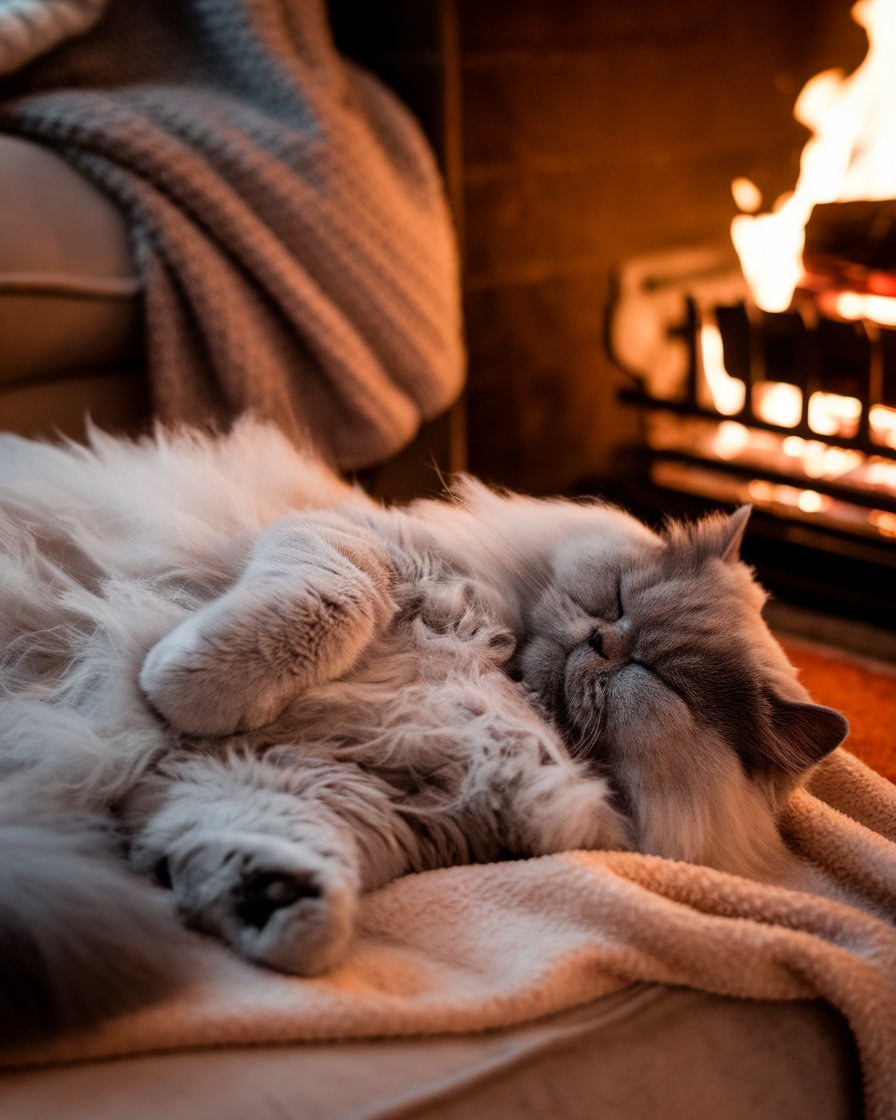
Cats have unique ways of expressing happiness, and one of the most delightful is when they flop over. This behavior is often a clear sign that a cat feels secure, content, and happy in its surroundings. By showing the belly and lying on its back, the cat demonstrates vulnerability, a strong indicator that it feels safe. Cat owners who observe their kitty rolling onto the ground can take this as a sign that their feline friend is in a positive emotional state. It’s a moment to cherish, as it reflects the cat’s trust and overall well-being in its environment. This display of cat contentment is a key part of building the bond between owner and pet.
Showing Contentment
When a cat flops and rolls on the ground, it’s often showing contentment. Cats use body language to communicate their emotions, and this flopping action signifies that they feel secure in your presence. This behavior is especially common when a cat is in a relaxed and peaceful environment. If you notice your cat flopping and exposing its belly, take it as a signal that they are happy and trust you. The act of rolling onto their back shows their comfort and can be seen as their way of enjoying the moment. Cats often do this after being petted or during calm periods of the day.
Manifestation of Joy
The act of flopping can also be a manifestation of joy. After a playful session, a cat may roll onto its back, basking in the happiness of the interaction. This rolling and flopping behavior shows that the cat is content with the bond they share with their owner. It’s their way of expressing delight and even inviting further play or affection. Cats are mysterious, but moments like these give insight into their emotional world. When your feline friend flops down and starts rolling around, it’s a clear sign that they are happy and connected to you.
“Animals are such agreeable friends—they ask no questions; they pass no criticisms.” – George Eliot
Feline Friend Mating Behavior
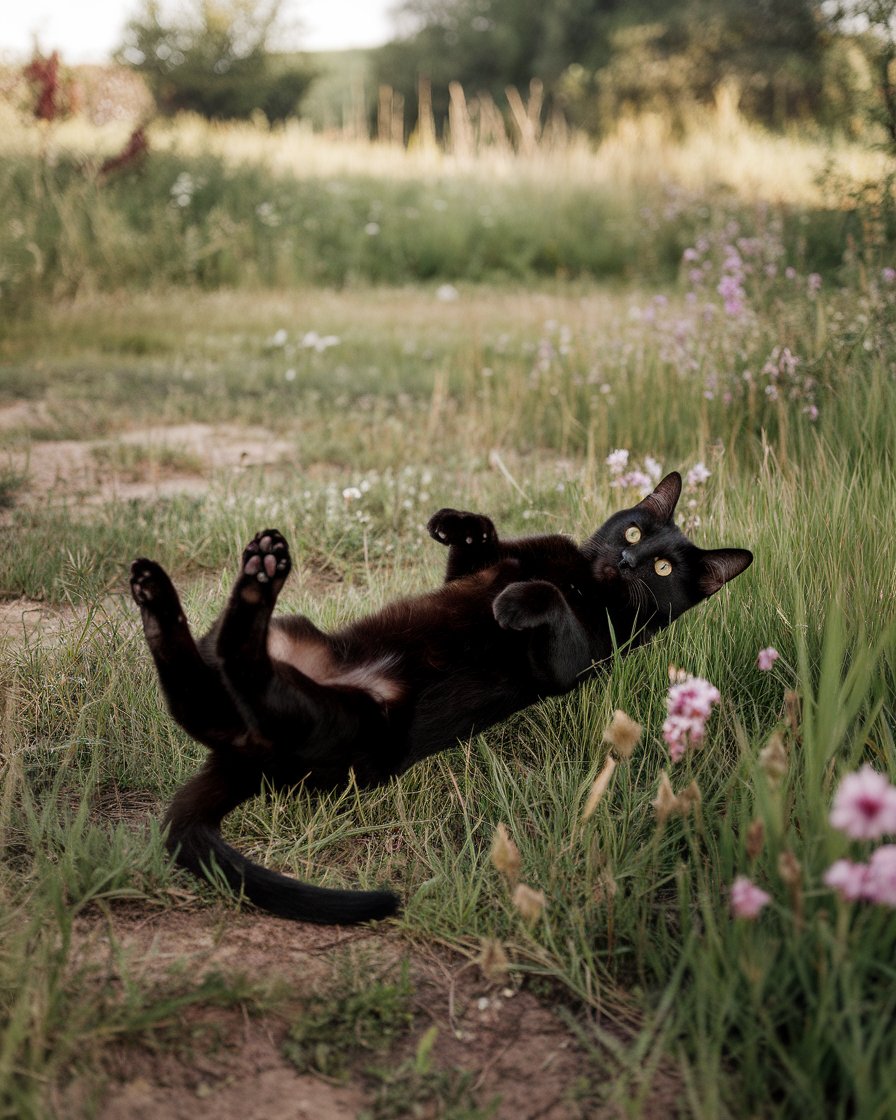
Cats exhibit various behaviors during mating cycles, one of which is flopping. Female cats, in particular, may engage in flopping as part of their instinctual mating signals when they go into heat. This behavior involves rolling onto the ground, sometimes with exaggerated movements, and showing the belly. While this may seem playful, it is actually an indication of the cat’s readiness to mate. For many cat owners, understanding this behavior is key to recognizing when cats don’t just seek attention but are in heat. It’s also important to remember that cat overpopulation is a serious issue, and spaying is a responsible measure to prevent unwanted behaviors and litters.
Heat-Induced Flopping
When a female cat goes into heat, flopping becomes one of her primary ways of signaling her readiness to mate. This behavior is usually accompanied by rolling on her back, exposing her belly, and adopting submissive postures to attract male cats. Many unspayed female cats engage in this behavior instinctively, as it’s their natural way of communicating availability to potential mates. For cat owners, noticing this flopping action can be a clear indicator that their cat is in heat. Understanding why your cat flops at these times is important, as it helps decode feline behavior during their reproductive cycle.
Importance of Spaying/Neutering
To mitigate unwanted mating behaviors, including flopping during heat cycles, spaying or neutering is a highly effective solution. Spaying not only prevents unwanted litters but also curtails many of the instinctual behaviors associated with a female cat’s reproductive cycle. By eliminating heat-induced actions like rolling and flopping, cat owners can create a more peaceful and stress-free environment for their pets. Spaying also contributes to the overall health of your cat, reducing the risk of certain cancers and preventing behavioral issues that often arise during mating periods. Making this responsible choice promotes long-term well-being for both the cat and its household.
Conclusion
Understanding cat behavior like flopping can deepen the connection between cats and their owners. When a cat flops down in front of you, it’s not just a playful act; it often indicates that they feel safe and are comfortable in their environment. This behavior, whether during a relaxed moment or after a playful session, shows that your cat trusts you and enjoys being in your presence. Recognizing the reasons behind why your cat flops can help you respond with affection and care.
In some cases, cat rolling on its back may be instinctual, linked to mating or attention-seeking behaviors. Whether it’s a display of trust, comfort, or a signal that your feline friend suddenly flops to get your attention, each instance strengthens the bond between cat and owner. Taking the time to delve into this fascinating behavior can make you more attuned to your pet’s emotional state, ensuring a happier and healthier relationship.

James Dunnington leads the James Dunnington Collection, featuring five unique blogs: a practical Pet Care Guide, an enlightening Ancient History Blog, a resourceful Home Improvement Guide, a cutting-edge Tech Innovation Guide, and a strategic Online Money Making platform. Each site delivers valuable insights designed to empower and inform. For updates and more tips, visit our Contact Us page to sign up for our newsletter, ensuring you never miss out on the latest content from any of these dynamic fields.
